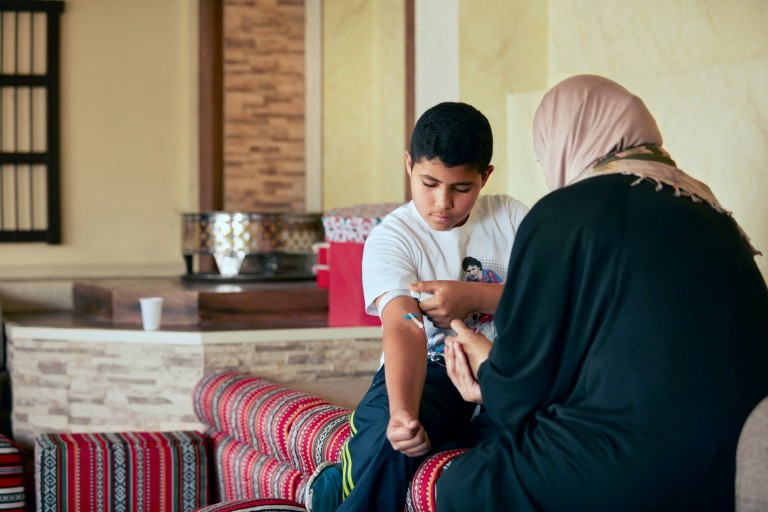Sheenia Chandler, who lives with sickle cell anemia in Wilmington, Delaware is one of twenty million people worldwide living with sickle cell disease, one of the most common inherited rare blood disorders.1
Living with sickle cell disease can be challenging and makes it
difficult to participate in certain activities. Growing up, Sheenia
had to sit out of gym classes at school because intense exercise can
trigger complications of sickle cell disease. And during her summer
vacations, she couldn’t go on roller coasters because the altitude
could cause her head to start hurting from the increased blood
pressure. For the same reason, Sheenia is still nervous to get on a
plane out of fear of what might happen to her.
Sheenia recalls spending months in and out of the hospital as a
child. At first, she didn’t understand what was causing the pain. She
compares the pain to the sensation of cold air passing through the
teeth but going through the bones in her body. The most common
symptoms she experiences are back pain, leg pain and headaches.
Although sickle cell was hard to manage when Sheenia was younger, with more experience, she has learned to recognize the pain and curve the symptoms before they escalate. Being the oldest of five children, Sheenia talks about the joy her family brings her and the help they provide managing life with sickle cell disease.
“I want to show people that have sickle cell that you can do
whatever you want to do. You could be whoever you want to
be.”
Sheenia is not letting sickle cell define how she lives her life. For the past three years, she’s worked as a support specialist, assisting adults with disabilities. As an aspiring advocate for the sickle cell community, Sheenia wants to show people living with sickle cell that they don't have to put their life on hold. Her plan this year is to do something new, whether it’s taking a hike or going to the gym, she wants to inspire the sickle cell community to try something they’ve never done before so they can reach their highest potential.
When it comes to her wishes for the future, Sheenia wants to become a pediatrician. As someone who struggled to understand their rare disease as a child, Sheenia wants to help other children recognize and manage their condition so they can feel safe and secure.
Sickle cell disease affects approximately 20 million people worldwide (2021)2, and has long been neglected, misunderstood and under-resourced. Not every disease is visible. That’s why we are making the invisible visible for a better future with sickle cell disease.
1Piel FB, Patil AP, Howes RE, et al. Global distribution of the sickle cell gene and geographical confirmation of the malaria hypothesis. Nat Commun. 2010;1:104. doi:10.1038/ncomms1104
22021, National Heart Lung and Blood Institute
